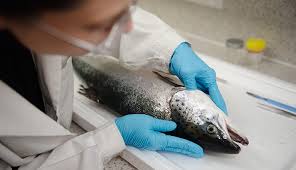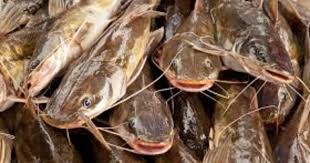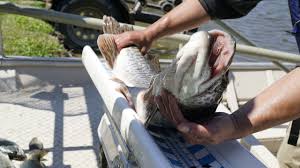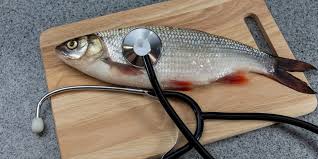The Fish Health Management Guide serves as a comprehensive resource for aquaculture practitioners, fishery managers, and hobbyists dedicated to maintaining the health and well-being of fish in both freshwater and marine environments. Healthy fish are vital for sustainable aquaculture and the preservation of wild fish populations. This guide will cover essential practices, strategies, and tips for ensuring optimal fish health and preventing diseases.
Fish health management involves understanding the biological, environmental, and ecological factors that affect fish health. Fish, like all animals, are susceptible to diseases caused by pathogens such as bacteria, viruses, fungi, and parasites. Environmental conditions, including water quality, temperature, and oxygen levels, play a crucial role in fish health. Stressors like overcrowding, poor nutrition, and inadequate habitat can weaken fish, making them more vulnerable to infections and diseases.
One of the primary goals of this guide is to equip fish owners and managers with the knowledge to recognize signs of stress and disease early. Early detection is key to effectively managing fish health. It allows for timely interventions, reducing mortality rates and economic losses. The guide will cover common signs of illness, such as abnormal swimming behavior, discoloration, lesions, or changes in appetite, providing readers with a clear framework for identifying health issues in their fish.
Another essential aspect of fish health management is prevention. Preventative measures are often more effective and economical than treating diseases after they occur. This guide will discuss the importance of biosecurity practices, such as quarantining new fish before introducing them into an existing population, maintaining clean facilities, and ensuring proper waste management. These practices help prevent the introduction and spread of pathogens within fish populations.
Nutrition is also a critical factor in fish health. Proper feeding practices ensure that fish receive the necessary nutrients for growth, reproduction, and overall well-being. This guide will highlight the importance of formulating balanced diets tailored to the specific needs of different fish species. By understanding the dietary requirements of their fish, owners can support robust immune systems and promote healthier fish populations.
Water quality management is another focal point of this guide. Fish are highly sensitive to changes in their environment, and poor water quality can lead to stress and disease outbreaks.
Readers will learn about the key parameters to monitor, including pH, ammonia, nitrite, nitrate levels, dissolved oxygen, and temperature. The guide will provide practical tips for maintaining optimal water conditions through regular testing and appropriate filtration and aeration systems.
Importance of Fish Health

1. Economic Impact: Healthy fish contribute to the profitability of aquaculture operations. Healthy fish grow faster and require less feed, resulting in lower production costs and higher returns for farmers.
2. Ecosystem Balance: Healthy fish populations play a vital role in maintaining ecological balance. They contribute to nutrient cycling, control algae growth, and support the food web in aquatic ecosystems.
3. Food Security: Fish is an important source of protein for millions of people worldwide. Ensuring fish health is essential for sustainable fish production, which helps meet the growing global demand for seafood.
4. Disease Prevention: Monitoring fish health can prevent the spread of diseases that can devastate populations. Healthy fish are less susceptible to infections, leading to lower mortality rates and reduced need for treatments.
5. Consumer Confidence: Healthy fish result in high-quality seafood products. Maintaining fish health ensures that consumers receive safe, nutritious, and high-quality fish.
Common Fish Diseases
Fish can be affected by various diseases, which can be broadly categorized into infectious and non-infectious diseases. Here are some common fish diseases:
1. Ich (Ichthyophthirius multifiliis): A parasitic infection that causes white spots on fish skin and gills, often referred to as “white spot disease.”
2. Fin Rot: A bacterial infection that leads to the deterioration of fish fins and tails, often caused by poor water quality or stress.
3. Dropsy: A condition characterized by swelling due to fluid accumulation in fish tissues, often associated with internal infections or organ failure.
4. Swim Bladder Disease: A disorder affecting the swim bladder, causing fish to have difficulty maintaining their buoyancy and position in the water.
5. Velvet Disease (Oodinium): A parasitic infection that causes a velvety appearance on the skin and gills, often resulting in respiratory distress.
6. Columnaris Disease: A bacterial infection that affects the skin and gills, leading to lesions and rapid deterioration of fish health.
Read Also: African Swine Fever: Description, Damages Caused, Control and Preventive Measures
Symptoms of Fish Illness

Recognizing the symptoms of fish illness is vital for early intervention and treatment. Common signs of fish health problems include:
1. Changes in Behavior: Infected fish may exhibit unusual behavior, such as lethargy, reduced activity, or isolation from the school.
2. Appetite Changes: A sudden decrease or complete loss of appetite can indicate illness.
3. Abnormal Swimming: Fish may swim erratically, float at the surface, or sink to the bottom if they are experiencing health issues.
4. Physical Symptoms: Look for visible signs of disease, including white spots (Ich), frayed fins (fin rot), swelling (dropsy), or abnormal growths.
5. Gasping for Air: Fish struggling to breathe may swim to the surface and gasp for air, indicating potential gill disease or poor water quality.
6. Color Changes: Changes in coloration, such as darkening or fading, can signal stress or illness in fish.
Prevention Strategies
1. Regular Monitoring: Regular health assessments of fish populations help identify early signs of illness or stress. Monitoring includes observing fish behavior, appetite, and physical condition.
2. Quarantine Practices: New fish should be quarantined before introducing them to established populations. This practice helps prevent the spread of diseases from new or infected fish.
3. Vaccination: Vaccines can protect fish from specific diseases. Implementing vaccination programs can reduce the incidence of infectious diseases in fish populations.
4. Record Keeping: Maintaining accurate records of fish health, treatments, and water quality parameters allows for better management and timely interventions when issues arise.
Biosecurity Measures
1. Facility Design: Designing aquaculture facilities to minimize disease transmission is crucial. This includes using separate equipment for different tanks and preventing cross-contamination.
2. Limited Access: Restricting access to fish farms and maintaining cleanliness can reduce the risk of disease introduction from external sources.
3. Personnel Hygiene: Ensuring that anyone working with fish follows strict hygiene protocols, including handwashing and changing clothes, helps prevent disease spread.
4. Disinfection Procedures: Regularly disinfecting tanks, equipment, and facilities helps eliminate pathogens and prevent outbreaks.
Nutritional Management
1. Balanced Diet: Providing a balanced diet that meets the nutritional requirements of fish species is essential for their growth and immunity. Nutritional deficiencies can lead to health issues.
2. High-Quality Feed: Using high-quality feed that contains essential nutrients, vitamins, and minerals supports fish health and enhances their ability to resist diseases.
3. Feed Adjustment: Adjusting feeding practices based on fish size, age, and health status ensures that fish receive the appropriate amount of food and nutrients.
4. Avoid Overfeeding: Overfeeding can lead to poor water quality and increase the risk of disease. Monitoring feeding rates and adjusting them accordingly is crucial for maintaining fish health.
Water Quality and Its Impact on Health
1. Dissolved Oxygen Levels: Maintaining adequate dissolved oxygen levels is essential for fish respiration. Low oxygen levels can lead to stress, decreased growth, and increased susceptibility to disease.
2. pH Levels: The pH level of water affects fish health and metabolism. Keeping the pH within the optimal range for the specific fish species is vital for their well-being.
3. Ammonia and Nitrite Levels: Monitoring ammonia and nitrite levels is crucial, as elevated levels can be toxic to fish. Regular water testing and proper filtration systems can help maintain safe levels.
4. Temperature Control: Temperature fluctuations can stress fish and impact their immune response. Maintaining stable water temperatures appropriate for the species is crucial for their health.
Read Also: 15 Medicinal Health Benefits Of Comfrey (Symphytum officinale)
Treatment Options for Fish Diseases

1. Medications: Using medications such as antibiotics, antifungals, and antiparasitics can effectively treat various fish diseases. It’s essential to identify the specific disease before administering treatment to ensure the correct medication is used.
2. Salt Treatment: Applying aquarium salt can help treat certain external parasites and reduce stress in fish. A salt bath or adding salt to the tank can aid in healing.
3. Temperature Adjustment: Increasing water temperature can sometimes accelerate the life cycle of parasites, allowing for easier treatment. However, this method should be used cautiously, as not all fish species tolerate higher temperatures.
4. Environmental Improvements: Improving water quality through filtration, aeration, and regular water changes can reduce stress and help fish recover from illness. Maintaining optimal water parameters is essential for overall fish health.
5. Isolation of Affected Fish: Isolating diseased fish in a hospital tank can prevent the spread of illness to healthy fish and allow for targeted treatment.
Quarantine Procedures for New Fish
1. Duration of Quarantine: New fish should be quarantined for at least 2-4 weeks before being introduced to an established tank. This period allows for observation and treatment of any potential illnesses.
2. Separate Equipment: Use separate nets, siphons, and other equipment for the quarantine tank to prevent cross-contamination with the main tank.
3. Monitoring Behavior and Health: Regularly observe new fish for signs of stress or disease, such as abnormal swimming, loss of appetite, or physical abnormalities.
4. Treatment During Quarantine: If any health issues are identified, treat the quarantined fish as needed without affecting the main tank.
5. Water Quality Management:
Maintain optimal water conditions in the quarantine tank to support the health of new arrivals. Regular water changes and monitoring are crucial during this period.
Record Keeping and Monitoring
1. Health Records: Maintain detailed health records for each fish, including observations, treatments, and outcomes. This information helps track the effectiveness of treatments and identify patterns of illness.
2. Water Quality Logs: Regularly monitor and log water quality parameters such as temperature, pH, ammonia, nitrite, and nitrate levels. Keeping accurate records can help detect issues before they affect fish health.
3. Feeding Logs: Documenting feeding schedules, amounts, and fish behavior during feeding can provide insights into the overall health and well-being of the fish.
4. Regular Assessments: Conduct regular health assessments and record findings. This proactive approach enables early detection of health issues and facilitates timely interventions.
5. Use of Technology: Utilizing software or apps for record-keeping can streamline monitoring processes and help manage data efficiently.
Do you have any questions, suggestions, or contributions? If so, please feel free to use the comment box below to share your thoughts. We also encourage you to kindly share this information with others who might benefit from it. Since we can’t reach everyone at once, we truly appreciate your help in spreading the word. Thank you so much for your support and for sharing!
Read Also: How to Build a Raised Bed Garden






